Cocktail Literature: Drinks in Classic Novels

Cocktail Literature: Drinks in Classic Novels
Introduction
In the vast landscape of literature, cocktails often play a surprisingly significant role. From enhancing the ambiance of a scene to reflecting the character's state of mind, these beverages are more than mere props. They are a testament to the era, the culture, and the social dynamics of the narrative. Today, we'll explore some iconic drinks from classic novels, delve into their recipes, and perhaps even draw inspiration from these literary masterpieces for our own mixology adventures.
The Great Gatsby: The Gin Rickey
F. Scott Fitzgerald's "The Great Gatsby" is drenched in the excess and glamour of the Roaring Twenties. One of the drinks that frequently makes an appearance is the Gin Rickey. This refreshing cocktail, simple yet elegant, perfectly encapsulates the era's spirit.
The Gin Rickey, believed to have been created in the late 19th century by bartender George A. Williamson at Shoomaker's bar in Washington, D.C., is a testament to the simplicity and sophistication of the time. Here's how you can recreate this classic at home:
Gin Rickey
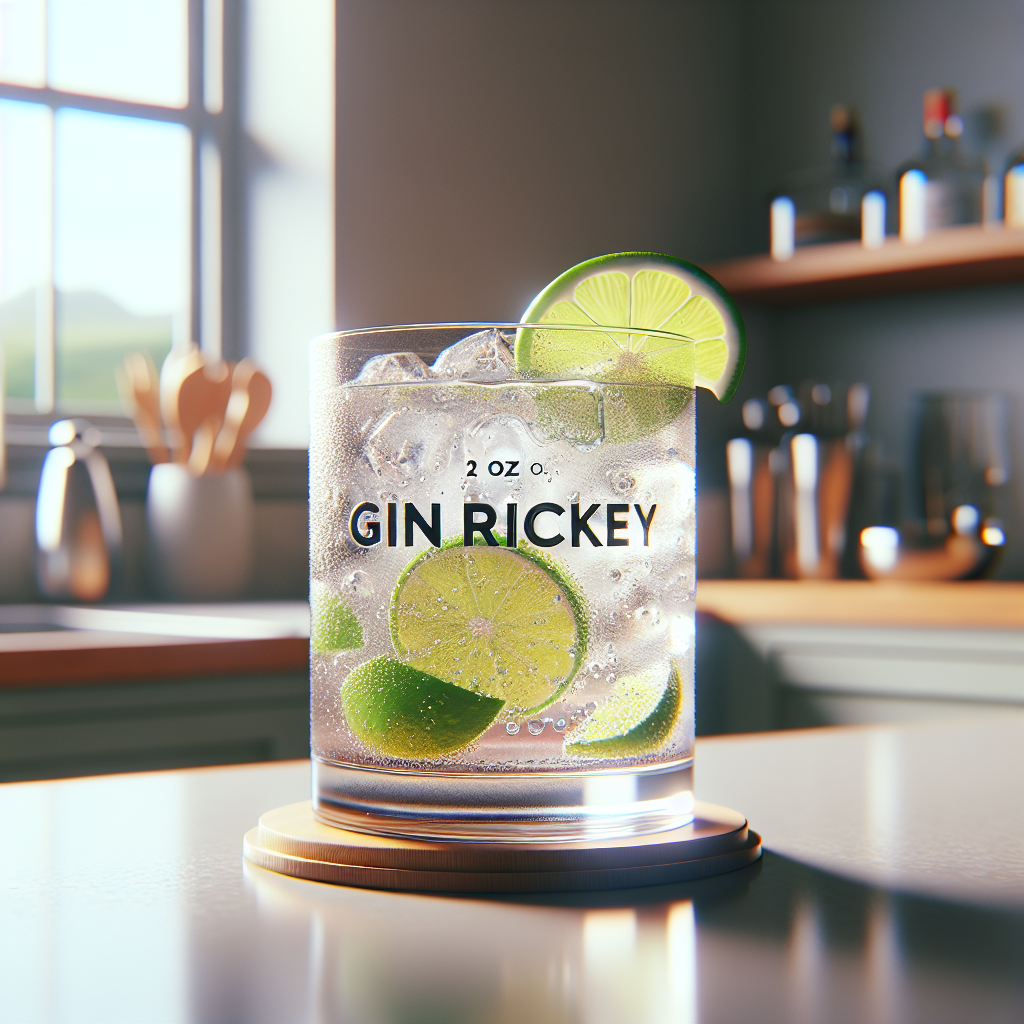
A classic cocktail from the Roaring Twenties, simple yet elegant.
Ingredients:
- 2 oz Gin
- 1/2 oz Lime juice
- Club soda to top
- Lime wedge for garnish
Instructions:
- Fill a highball glass with ice.
- Pour in the gin and lime juice.
- Top with club soda.
- Garnish with a lime wedge.
Casino Royale: The Vesper Martini
Ian Fleming's James Bond is synonymous with the Martini, but it was in "Casino Royale" that Bond introduced the world to the Vesper Martini. Named after the fictional Vesper Lynd, this drink combines gin, vodka, and Lillet Blanc, creating a potent and complex cocktail.
Fleming, a known enthusiast of cocktails, crafted this recipe with precision. The Vesper Martini is a testament to the suave sophistication of Bond himself. Here's how to mix this iconic drink:
Vesper Martini
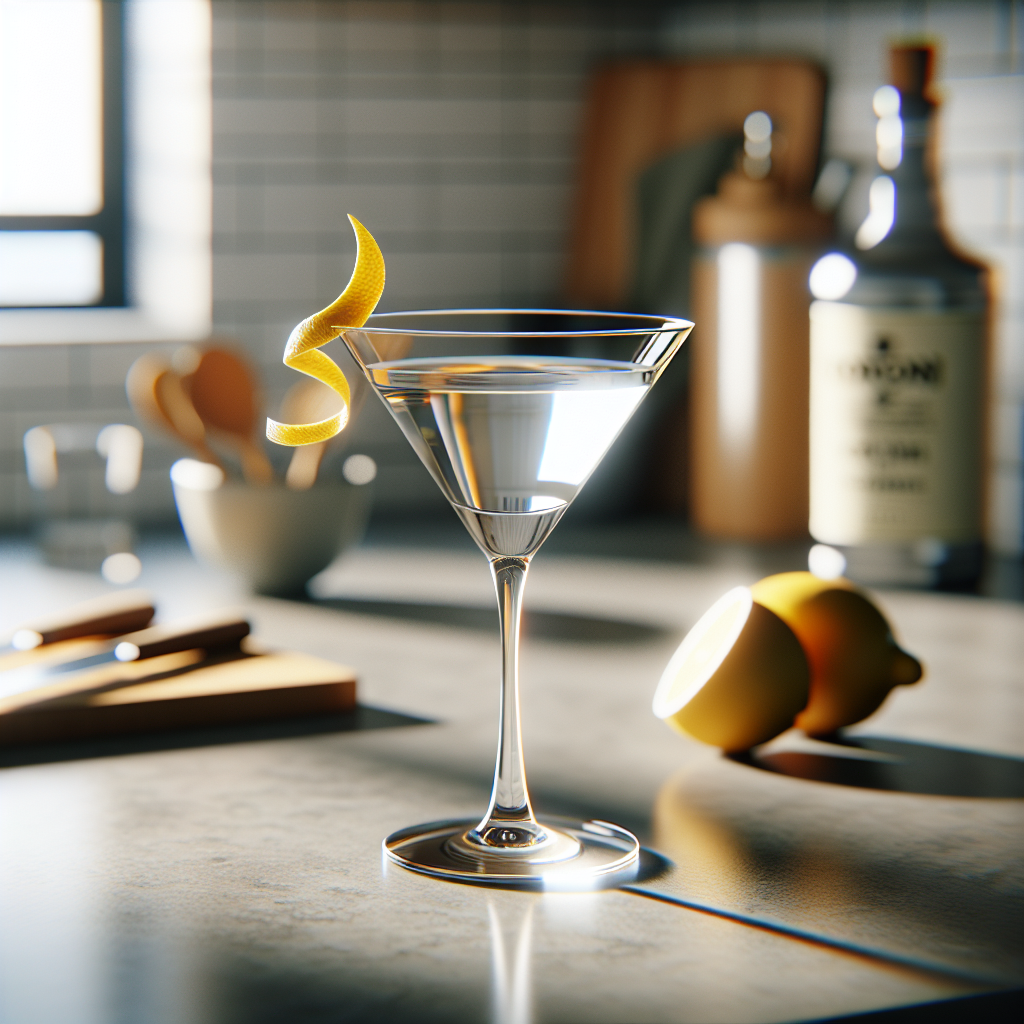
The iconic cocktail from Ian Fleming's 'Casino Royale', named after Vesper Lynd.
Ingredients:
- 3 oz Gin
- 1 oz Vodka
- 1/2 oz Lillet Blanc
- Lemon peel for garnish
Instructions:
- Fill a mixing glass with ice.
- Add the gin, vodka, and Lillet Blanc.
- Stir until well-chilled.
- Strain into a chilled martini glass.
- Garnish with a lemon peel.
The Maltese Falcon: The Sazerac
In Dashiell Hammett's "The Maltese Falcon," the Sazerac makes a notable appearance. This New Orleans classic, dating back to the 19th century, is a complex cocktail that combines rye whiskey, absinthe, and Peychaud's bitters. The Sazerac is a drink that embodies the mystery and sophistication of Hammett's narrative.
The Sazerac's origins are attributed to Antoine Amédée Peychaud, a New Orleans apothecary who created the drink in the 1830s. Here's how you can mix this historical cocktail:
Sazerac
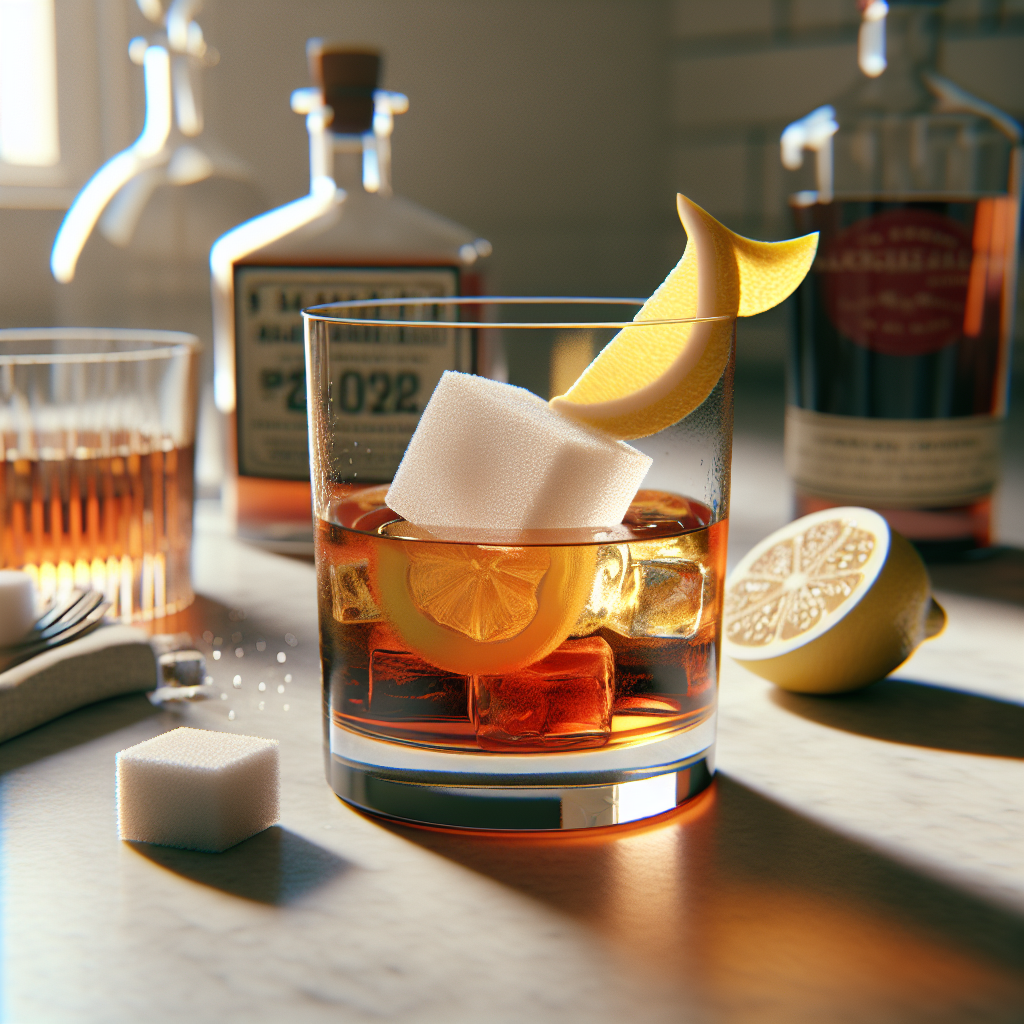
A classic New Orleans cocktail that embodies the ritual of the absinthe rinse, created by Antoine Peychaud in the 19th century.
Ingredients:
- 1 sugar cube
- 2 dashes Peychaud's bitters
- 1 ounce water
- 2 ounces rye whiskey
- 1/4 ounce absinthe
- Lemon peel, for garnish
Instructions:
- In a mixing glass, muddle the sugar cube with the bitters and water until the sugar is dissolved.
- Add the rye whiskey and ice, and stir until well chilled.
- In a chilled rocks glass, pour the absinthe and swirl to coat the inside of the glass, then discard the excess.
- Strain the whiskey mixture into the prepared glass.
- Express the oils from the lemon peel over the drink, then rub the peel around the rim of the glass and drop it in as a garnish.
To Kill a Mockingbird: The Mint Julep
Harper Lee's "To Kill a Mockingbird" is set in the Deep South, where the Mint Julep reigns supreme. This refreshing drink, traditionally associated with the Kentucky Derby, is a symbol of Southern hospitality and tradition.
The Mint Julep's origins can be traced back to the early 19th century, with its popularity soaring in the Southern United States. Here's how you can craft this Southern staple:
Mint Julep
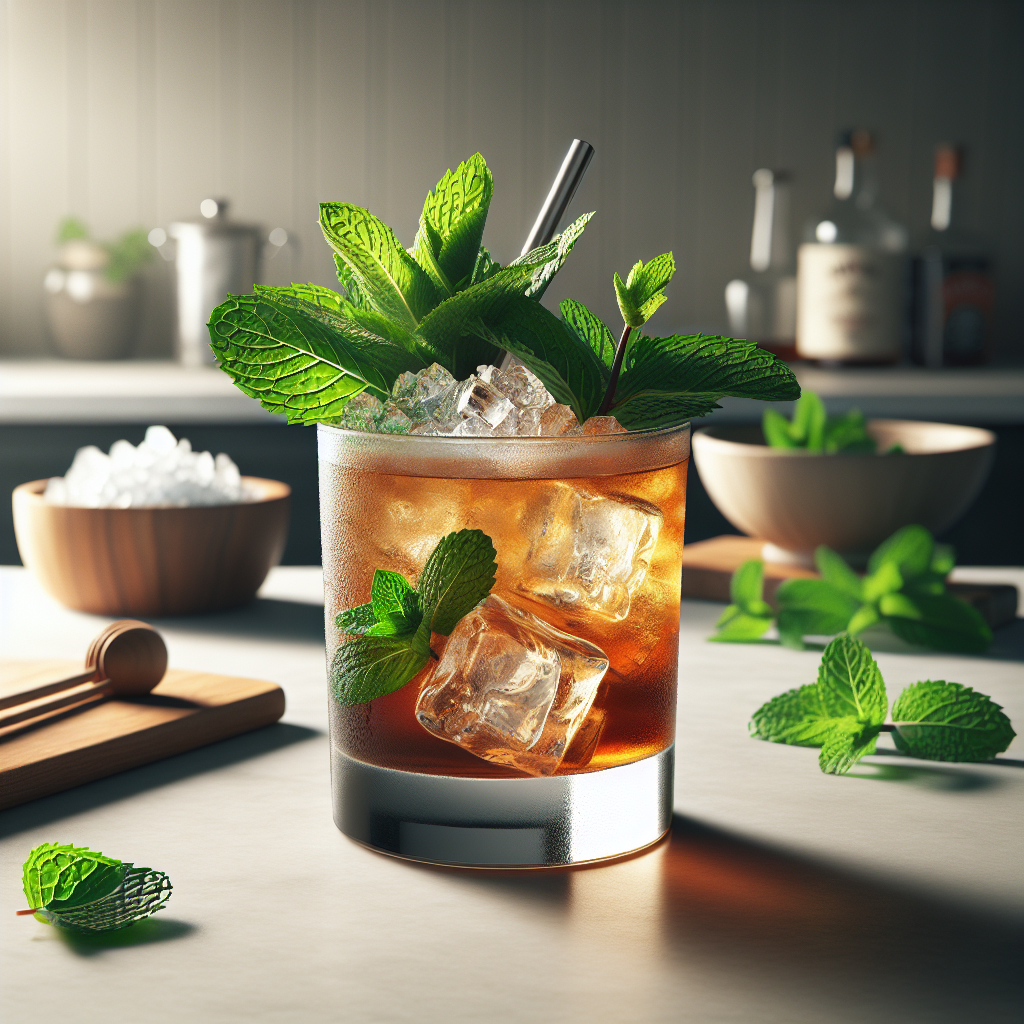
A refreshing Southern classic, traditionally associated with the Kentucky Derby.
Ingredients:
- 2 oz Bourbon
- 1/2 oz Simple syrup
- 8-10 fresh mint leaves
- Crushed ice
- Mint sprig for garnish
Instructions:
- In a julep cup or rocks glass, muddle the mint leaves with the simple syrup.
- Fill the glass with crushed ice.
- Pour in the bourbon.
- Stir until the glass frosts over.
- Garnish with a mint sprig.
The Hound of the Baskervilles: The Sherry Flip
Sherlock Holmes, the iconic detective created by Sir Arthur Conan Doyle, is often seen enjoying a variety of drinks. In "The Hound of the Baskervilles," Holmes sips on a Sherry Flip, a rich and creamy concoction that dates back to the 17th century.
The Sherry Flip combines sherry, sugar, and a whole egg, creating a velvety drink that's perfect for colder evenings. Here's how you can whip up this historical delight:
Sherry Flip
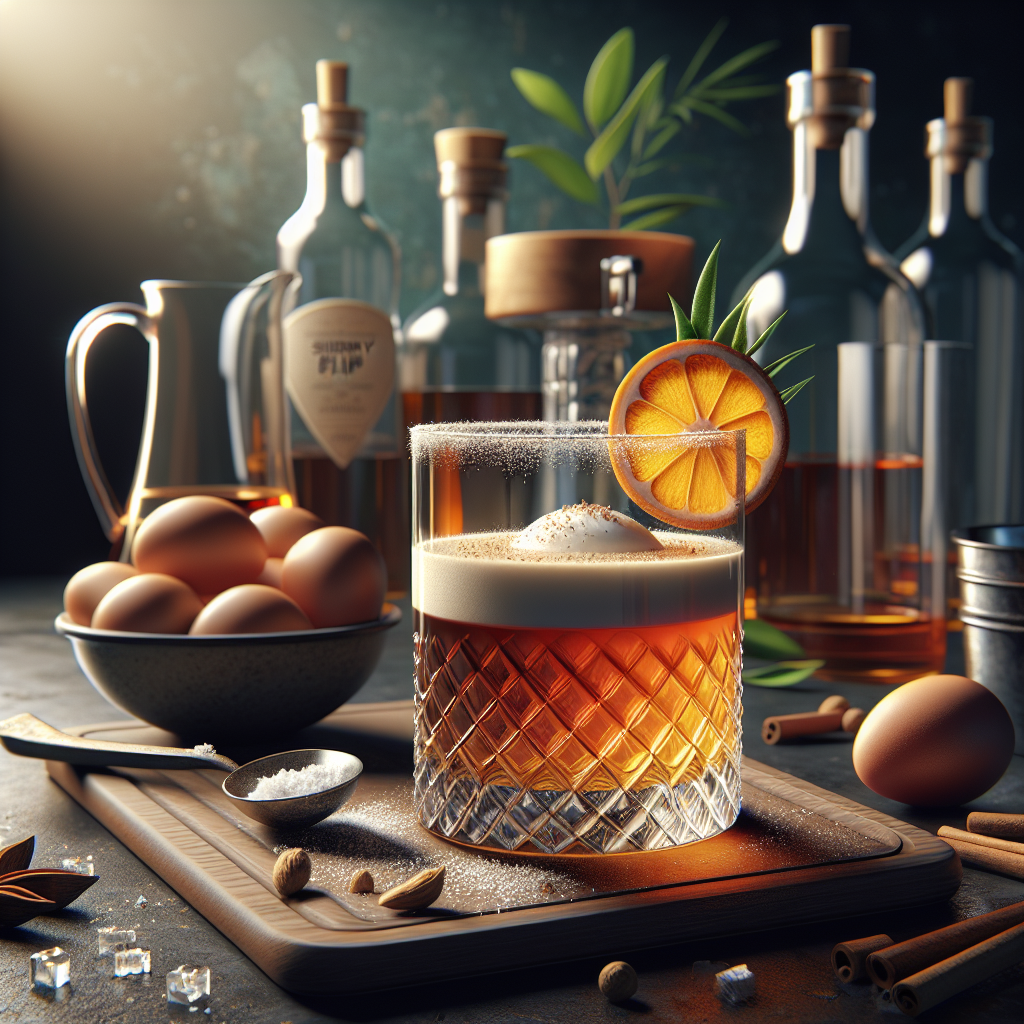
A rich and creamy 17th-century concoction enjoyed by Sherlock Holmes.
Ingredients:
- 2 oz Sherry
- 1/2 oz Simple syrup
- 1 whole egg
- Nutmeg for garnish
Instructions:
- In a shaker, combine the sherry, simple syrup, and whole egg.
- Dry shake (without ice) vigorously to emulsify the egg.
- Add ice and shake again until well-chilled.
- Strain into a chilled glass.
- Grate fresh nutmeg over the top for garnish.
The Importance of Drinks in Literature
Cocktails in literature serve multiple purposes. They can set the scene, reveal character traits, or even drive the plot forward. For instance, the Gin Rickey in "The Great Gatsby" reflects the carefree and indulgent nature of the characters, while the Vesper Martini in "Casino Royale" highlights Bond's meticulous nature and his penchant for sophistication.
Moreover, these drinks often reflect the cultural and historical context of the novel. The Sazerac in "The Maltese Falcon" evokes the mysterious and shadowy world of 1930s San Francisco, while the Mint Julep in "To Kill a Mockingbird" brings to life the warmth and hospitality of the Deep South.
Conclusion
Cocktails in classic novels are more than just drinks; they are symbols of the times, reflections of character, and sometimes even plot devices. By exploring these literary concoctions, we not only gain a deeper understanding of the stories but also find inspiration for our own mixology endeavors.
Whether you're sipping a Gin Rickey while re-reading "The Great Gatsby" or enjoying a Sherry Flip in the spirit of Sherlock Holmes, these drinks connect us to the worlds of our favorite novels in a deliciously tangible way. So next time you pick up a classic, consider mixing up one of these iconic cocktails to enhance your reading experience.
Cheers to the literary world of mixology!